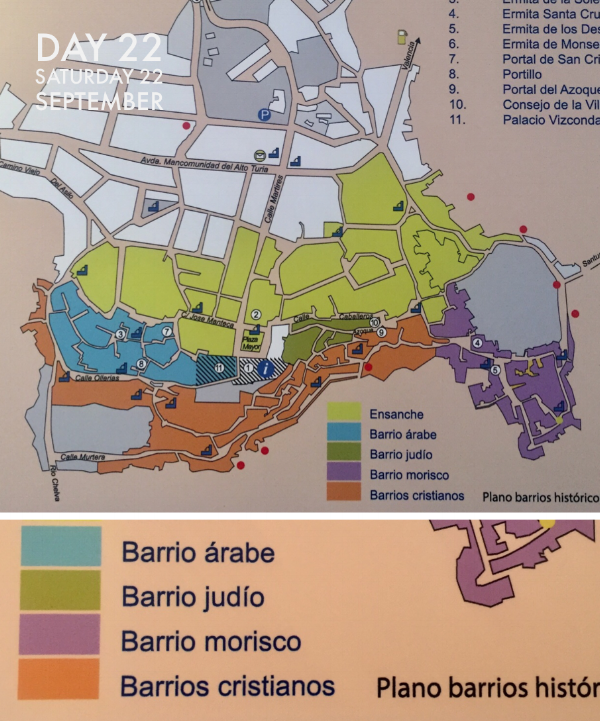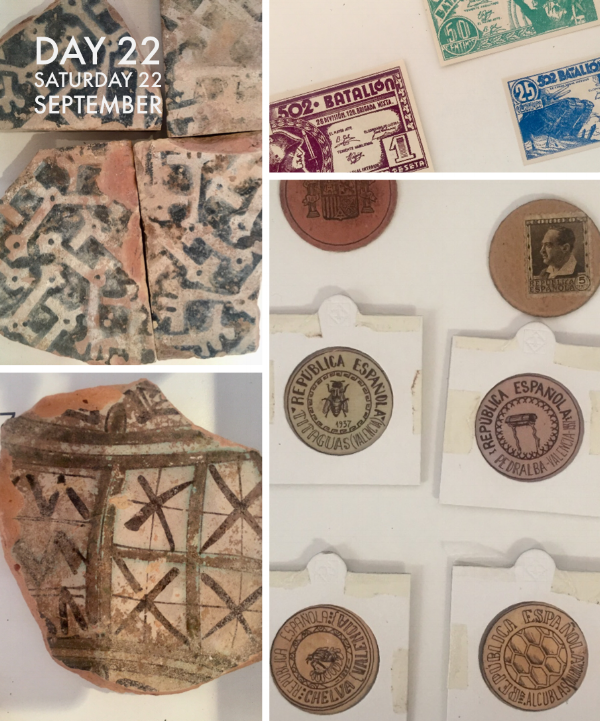DAY 22 Saturday 22 September
Map showing the various cultural quarters of Chelva (barrios). An amazing number for such a small place.
Every Saturday the Archeological Museum offers different walking tours; this week was the cultural quarters (barrios) of the Chelva. Just three of us plus the guide assembled at 10am and set off for a two hour walk around the Moorish (North African Arab) Christian, Jewish and Arab (Muslim residents re-settled outside the city walls) quarters.
The museum is small, but gives a good account of the different cultures passing through Chelva; starting with prehistoric cave dwellers with flint arrows by the Chelva River, the Ibericans who spoke a non Proto-Indo European language akin to Basque and then the Romans, Moors and Christians and Jews; only the street patterns seem to remain from previous inhabitants and the irrigation system. I also leant that the Roman aqueduct was not built by slaves, but by professionals.
Two pieces of Arab influenced pottery caught my eye. The images on the right are token money used during the Civil War.
The final case shows artefacts from the Civil War, including local paper coins/notes which each town issued, because the official currency was used by the government to pay for troops and armaments.
Hand cooked crisps on the snack stall, delicious olives and pickles and wild fungi. People buy them in kilos- I’m not sure what they do with so many!
Saturday is also market day and I buy olives, fruit and more ‘ravellanos ‘? mushrooms, which I take home and cook straight away. The old lady selling them sits on a crate with two baskets full and she sells me a kilo! They are pale orange with green bruises but turn red when cut, but simmer down to an innocuous brown when cooked; slightly woody and chewy. I don’t think I’ll rush out and buy more.
Typical street planting
After siesta I go for a cup of tea with an Argentinian woman and her Basque husband who also live in the Arrabal district; we eat a selection of delicious homemade jams on biscuits.




